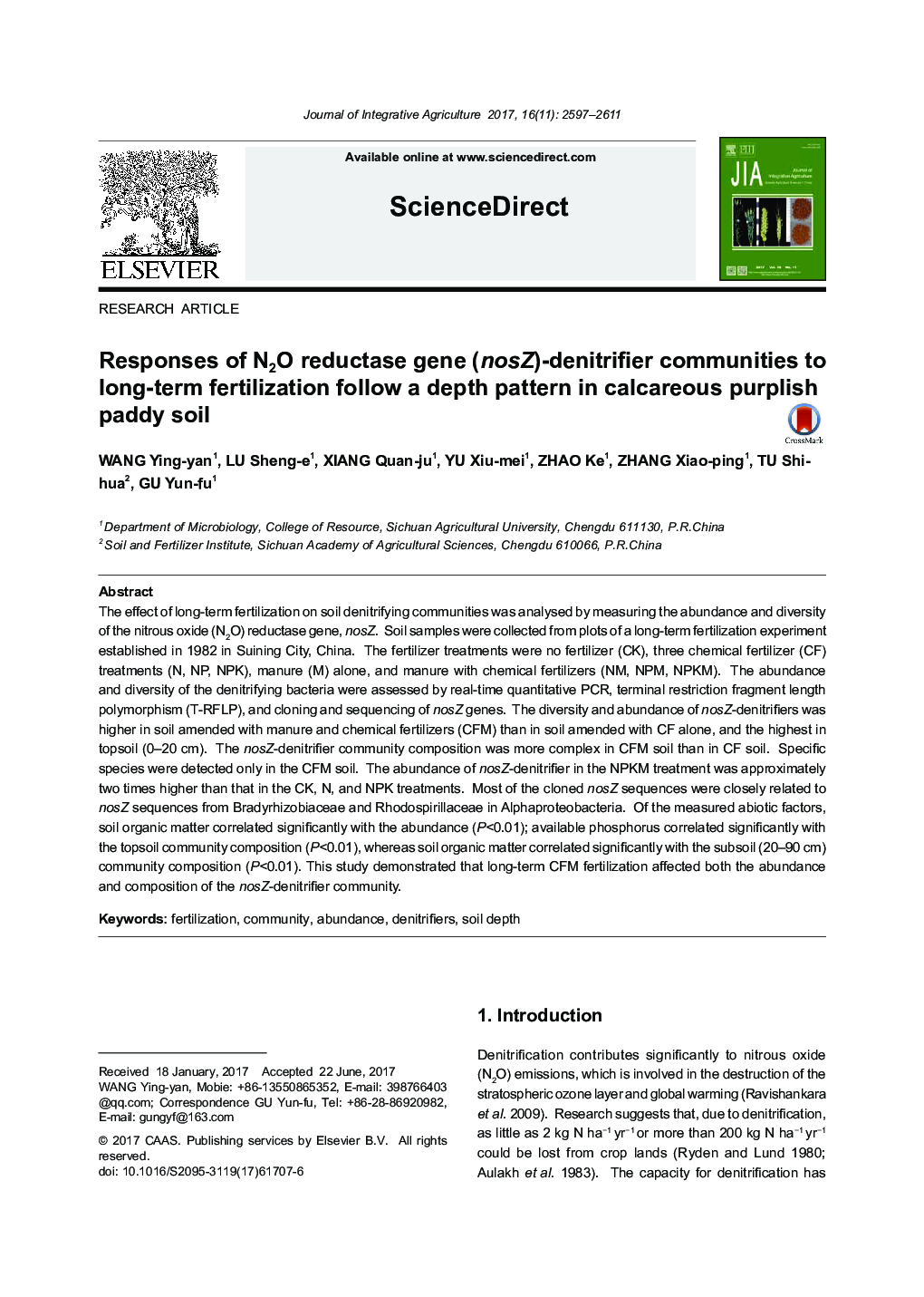| Article ID | Journal | Published Year | Pages | File Type |
|---|---|---|---|---|
| 8875818 | Journal of Integrative Agriculture | 2017 | 15 Pages |
Abstract
The effect of long-term fertilization on soil denitrifying communities was analysed by measuring the abundance and diversity of the nitrous oxide (N2O) reductase gene, nosZ. Soil samples were collected from plots of a long-term fertilization experiment established in 1982 in Suining City, China. The fertilizer treatments were no fertilizer (CK), three chemical fertilizer (CF) treatments (N, NP, NPK), manure (M) alone, and manure with chemical fertilizers (NM, NPM, NPKM). The abundance and diversity of the denitrifying bacteria were assessed by real-time quantitative PCR, terminal restriction fragment length polymorphism (T-RFLP), and cloning and sequencing of nosZ genes. The diversity and abundance of nosZ-denitrifiers was higher in soil amended with manure and chemical fertilizers (CFM) than in soil amended with CF alone, and the highest in topsoil (0-20 cm). The nosZ-denitrifier community composition was more complex in CFM soil than in CF soil. Specific species were detected only in the CFM soil. The abundance of nosZ-denitrifier in the NPKM treatment was approximately two times higher than that in the CK, N, and NPK treatments. Most of the cloned nosZ sequences were closely related to nosZ sequences from Bradyrhizobiaceae and Rhodospirillaceae in Alphaproteobacteria. Of the measured abiotic factors, soil organic matter correlated significantly with the abundance (P<0.01); available phosphorus correlated significantly with the topsoil community composition (P<0.01), whereas soil organic matter correlated significantly with the subsoil (20-90 cm) community composition (P<0.01). This study demonstrated that long-term CFM fertilization affected both the abundance and composition of the nosZ-denitrifier community.
Related Topics
Life Sciences
Agricultural and Biological Sciences
Agricultural and Biological Sciences (General)
Authors
Ying-yan WANG, Sheng-e LU, Quan-ju XIANG, Xiu-mei YU, Ke ZHAO, Xiao-ping ZHANG, Shi-hua TU, Yun-fu GU,
